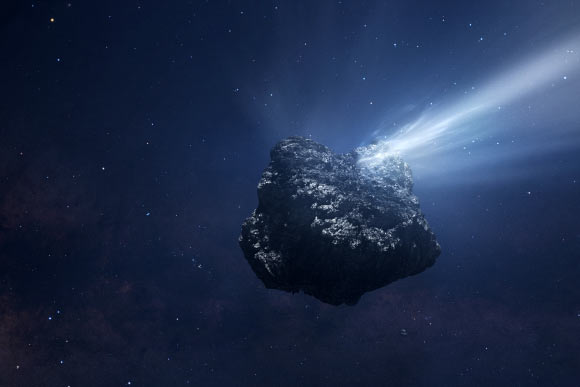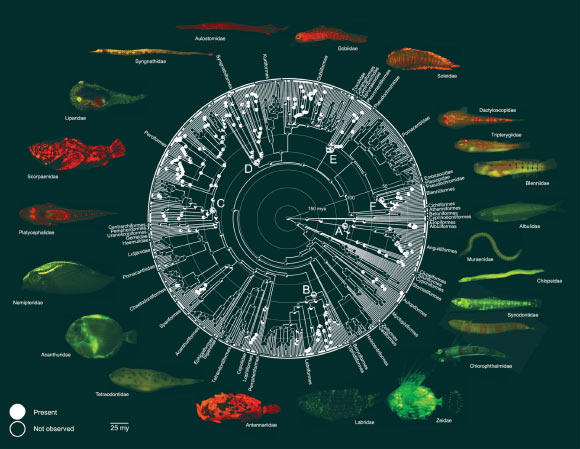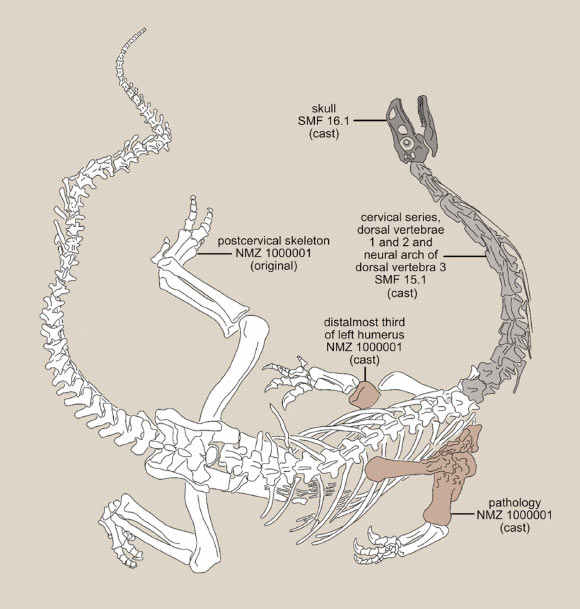Astronomers using the Atacama Large Millimeter/submillimeter Array (ALMA) have observed comet C/2014 UN271 (Bernardinelli-Bernstein) — the largest and second most distantly active comet ever observed from the Oort Cloud — while it was more than halfway to Neptune, at an astonishing distance of 16.6 times the distance between the Sun and Earth.
C/2014 UN271 was discovered by astronomers Pedro Bernardinelli and Gary Bernstein in Dark Energy Survey images captured in 2014.
This comet has an orbital period millions of years long and measures nearly 140 km (85 miles) across — more than 10 times the size of most known comets.
Until now, little was known about how such cold, distant objects behave.
The new observations from ALMA revealed complex and evolving jets of carbon monoxide gas erupting from the comet’s nucleus, providing the first direct evidence of what drives its activity so far from the Sun.
“These measurements give us a look at how this enormous, icy world works,” said Dr. Nathan Roth, an astronomer at American University and NASA’s Goddard Space Flight Center.
“We’re seeing explosive outgassing patterns that raise new questions about how this comet will evolve as it continues its journey toward the inner Solar System.”
ALMA observed C/2014 UN271 by capturing light from carbon monoxide gas in its atmosphere and heat (thermal emission) when the comet was still very far from the Sun.
Thanks to ALMA’s high sensitivity and resolution, scientists could focus on the extremely faint signal from such a cold, distant object.
Building on previous ALMA observations that first characterized the large nucleus size of the comet, the new findings measured the thermal signal to further calculate the comet’s size and the amount of dust surrounding its nucleus.
Their values for the nucleus size and dust mass are in agreement with previous ALMA observations and confirm it as the largest Oort Cloud comet ever found.
ALMA’s ability to precisely measure these signals made this study possible, offering a clearer picture of this distant, icy giant.
“The discovery not only marks the first detection of molecular outgassing in this record-setting comet, but also offers a rare glimpse into the chemistry and dynamics of objects originating from the farthest reaches of our Solar System,” the astronomers said.
“As C/2014 UN271 approaches the Sun, we anticipate that more frozen gases will begin to vaporize, revealing even more about the comet’s primitive makeup and the early Solar System.”
“Such discoveries help answer fundamental questions about where Earth and its water came from, and how life-friendly environments might form elsewhere.”
The team’s paper was published in the Astrophysical Journal Letters.
_____
Nathan X. Roth et al. 2025. The First Detection of Molecular Activity in the Largest Known Oort Cloud Comet: ALMA Imaging of C/2014 UN271 (Bernardinelli-Bernstein) at 16.6 AU from the Sun. ApJL 986, L22; doi: 10.3847/2041-8213/add526

























